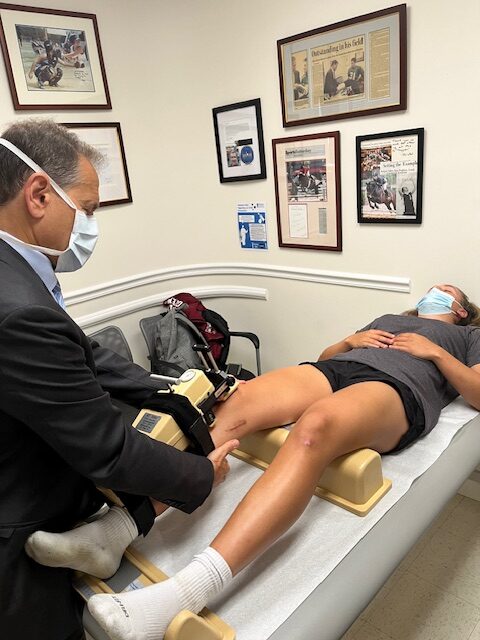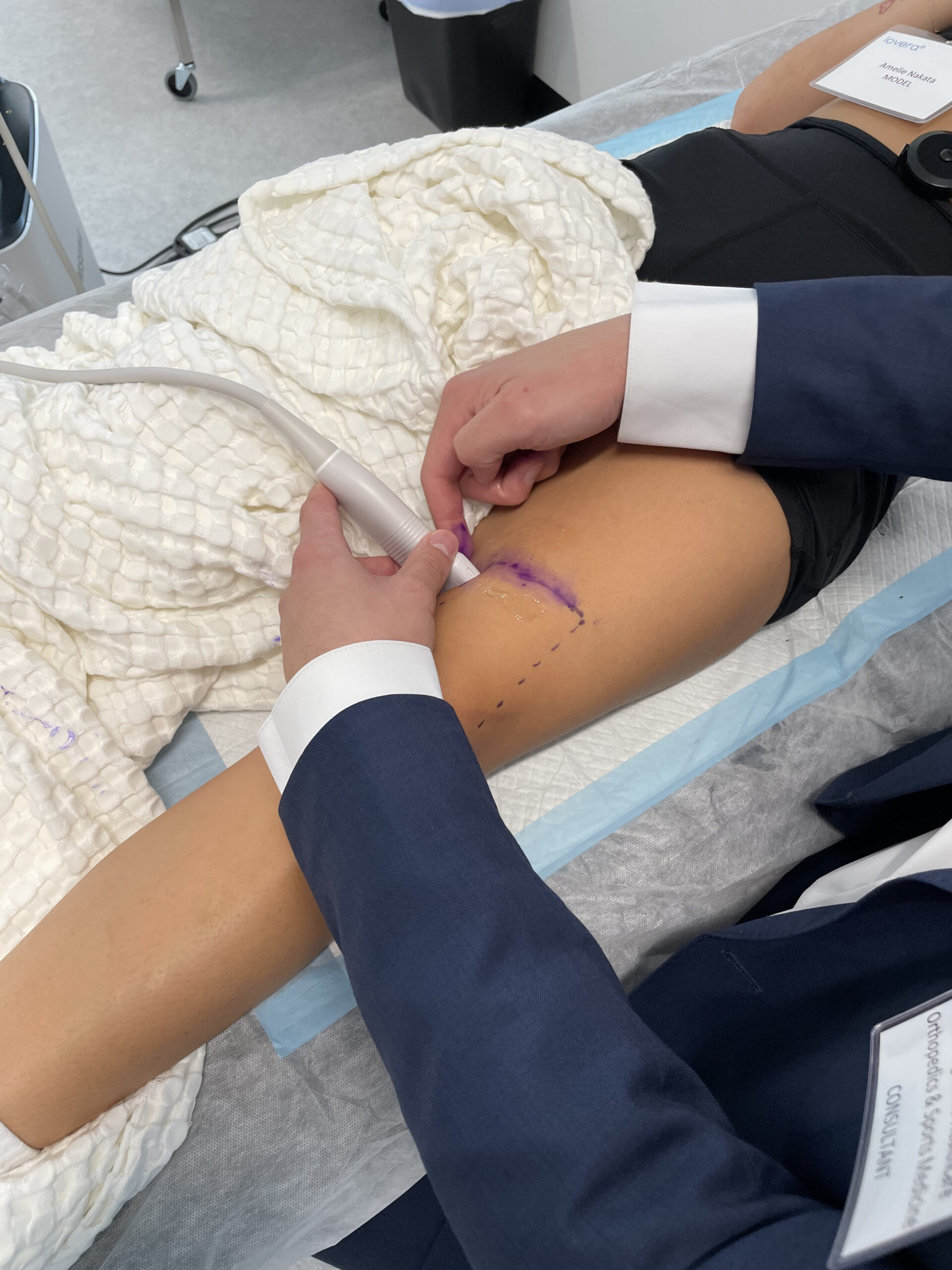Curious about the latest innovations in knee implant materials for arthroplasty? This article covers the cutting-edge materials transforming knee replacements, from advanced polyethylene blends that reduce wear to bioactive coatings promoting faster bone growth. Discover how these new materials can improve your surgery outcomes and quality of life.
Key Takeaways
- Recent advancements in knee implant materials, such as Highly Cross-Linked Polyethylene (HXLPE) and oxidized zirconium, significantly enhance durability and reduce the need for revision surgeries, addressing key concerns of patient dissatisfaction post-surgery.
- Bioactive coatings, including hydroxyapatite and antibacterial coatings, and the development of patient-specific and hypoallergenic implants are pivotal innovations aimed at improving implant integration, reducing infections, and catering to patients with metal allergies.
- Emerging technologies like 3D printing, smart implants, and nanomaterials are revolutionizing knee arthroplasty by enabling patient-specific solutions, real-time monitoring, and enhanced biocompatibility, promising improved clinical outcomes and personalized patient care.

Knee Biomechanics
Understanding the latest innovations in knee implant materials is more than a scientific curiosity—it’s an extremely important journey towards regaining the freedom of movement. With up to 20% of total knee arthroplasty (TKA) patients experiencing dissatisfaction, and a staggering projected growth of 673% in demand for this life-changing surgery, such as total knee replacement, the quest for improved outcomes has never been more urgent.
Knee biomechanics play a crucial role in our daily activities, and the materials that form the new generation of knee implants are pivotal in restoring native function while minimizing the risk of future complications, including knee pain.
Advances in Polyethylene Blends
In the landscape of plastic implants, significant advancement has been made with the introduction of advanced polyethylene blends. These technological advances serve as the cornerstone for the next generation of knee replacements, promising added durability and a significant reduction in wear.
Addressing the concerns of the one in five patients who find themselves dissatisfied post-surgery, the focus on enhancing the longevity of knee implants has become a central theme in orthopedic research, particularly for those suffering from knee osteoarthritis.
Highly Cross-Linked Polyethylene (HXLPE)
HXLPE stands out as a significant innovation within the polyethylene family, offering superior wear resistance and longevity compared to its conventional counterparts. This has a profound implication for patients, as it directly translates to a reduced need for revision surgeries and a longer lifespan for the knee implant itself.
The reduction of wear debris, which can lead to osteolysis, is of paramount importance for maintaining the health of the surrounding bone, and HXLPE’s ability to mitigate this concern is a groundbreaking stride in knee implant material science.
Ceramic Innovations in Knee Implants
Ceramics are redefining the standards for durability and wear resistance in knee implants. With a lifespan that can extend beyond 30 years, these materials are revolutionizing what patients can expect from their knee replacement surgery.
The benefits of ceramics in medical applications include:
- Exceptionally smooth surface finish
- ‘Wettable’ nature
- Significant reduction in friction
- Less wear
- Affords patients a more natural range of motion post-surgery.
Oxidized Zirconium
Oxidized zirconium is a material that marries the hardness and low friction of ceramics with the strength and resilience of metal implants. The result is a knee implant material that stands up to the rigors of daily use without compromising on durability.
Notably, the scratch resistance of oxidized zirconium ensures that the smooth surface integral to its performance is maintained over time, making it a strong candidate for patients seeking long-lasting solutions.
Titanium and Its Alloys
Advancements in knee implants have seen titanium and its alloys emerge as front-runners due to their exceptional strength, biocompatibility, and corrosion resistance. These materials, including the well-established alpha and beta titanium alloys, have been pivotal in the design of both the femoral component and tibial components of knee implants.
Recent innovations have also introduced advanced porous titanium systems, which are cobalt-free and designed to facilitate bone fixation, promising enhanced long-term outcomes.
Tantalum (Trabecular Metal)
Tantalum, often referred to as trabecular metal, is the ‘holy grail’ for patients requiring knee implants that offer superior stability. Its porous structure not only mimics cancellous bone but also encourages bone ingrowth, which is critical for securing the implant within the body.
The mechanical properties of tantalum closely resemble those of bone, improving load distribution and reducing the phenomenon of stress shielding—a common issue with less porous metal implants.
Bioactive Coatings
Bioactive coatings on knee implants represent a significant leap in promoting bone growth and implant integration. Unlike traditional implant surfaces, these coatings actively facilitate early bone ingrowth, providing the essential foundation for stable implant fixation.
Additionally, the presence of strontium in some bioactive coatings has been found to activate pathways leading to improved osteogenic differentiation, further enhancing the integration process.
Hydroxyapatite Coatings
Hydroxyapatite is a bioactive ceramic that closely resembles the mineral component of bone, acting as a scaffold for new bone to grow and integrate with the implant. The use of hydroxyapatite coatings on knee implants is not just about promoting bone growth; it’s about transforming the implant into a structure that the body can recognize and build upon, ensuring a stable, long-term fixation.
Antibacterial Coatings
Post-surgical infections are a concern for any implant procedure, but the development of antibacterial coatings is changing the game in knee implant safety. These coatings are designed to release antibacterial agents like silver and gentamicin, which work relentlessly to prevent bacterial colonization on the implant surface.
With the ability to tailor these coatings to specific infection risks, the potential for patient-specific antibacterial protection is both a preventative measure and a peace of mind for those undergoing knee replacement surgery.
3D Printing and Patient-Specific Implants
The advent of 3D printing and additive manufacturing has ushered in a new era of medical technology, making patient-specific implants a reality. These custom implants are designed to fit the unique contours of a patient’s bone structure, optimizing fit and potentially reducing surgical times.
Not only do these advancements promise a more precise fit, but they also aim to enhance recovery times and overall satisfaction post-surgery.
Patient-Specific Instrumentation (PSI)
Patient-specific instrumentation (PSI) represents a paradigm shift in knee replacement surgery, offering surgeons the tools to perform bone resections with unprecedented precision. PSI systems, based on detailed preoperative imaging, enable a level of customization that was previously unattainable, leading to better alignment and stability of the knee joint.
This approach not only simplifies the surgical process but also contributes to improved patient outcomes and satisfaction, further proving the value of technological integration in orthopaedic surgery. Additionally, the orthopaedic data evaluation panel plays a crucial role in assessing the effectiveness of these advancements.
Hypoallergenic and Nickel-Free Implants
For patients with metal allergies, the development of hypoallergenic and nickel-free implants is a breakthrough in knee arthroplasty. These implants, often made of materials like titanium and zirconium, offer a safe alternative to traditional metal implants, significantly reducing the risk of allergic reactions and ensuring a smoother recovery.
The success stories of patients who have transitioned to hypoallergenic implants, experiencing a resolution in symptoms, underscore the importance of these material innovations in improving patient quality of life.
Hypoallergenic Coatings
Hypoallergenic coatings, such as titanium-nitride, are a key component in the arsenal against metal sensitivity, offering patients a safer, biocompatible interface between their body and the implant. These coatings not only reduce the risk of allergic reactions but also aim to enhance the mechanical properties of the implant, increasing its hardness and resistance to wear.
However, it’s critical to note that while these coatings are promising, some studies have reported concerns with aseptic loosening, highlighting the need for continued research and development in this area.
Smart Implants and Nanotechnology
Smart implants, nanotechnology, and robotic assistance are at the forefront of a revolution in knee arthroplasty, particularly in the development of artificial knee joints. These innovations promise to transform the patient experience by offering real-time monitoring capabilities that can lead to early detection and management of potential issues.
Not only do smart implants provide valuable data to healthcare professionals, but they also empower patients with insights into their joint health, potentially improving clinical outcomes and reducing the risk of complications such as arthrofibrosis.
Nanomaterials
Nanomaterials are redefining what’s possible in knee implant surface properties and biocompatibility. By harnessing the power of nanotechnology, these materials offer improved mechanical strength, superior wear resistance, and enhanced integration with bone and surrounding tissues.
The unique properties of nanomaterials contribute to the longevity and success of knee implants, making them an exciting area of research and application in the field of orthopedic surgery.
Biodegradable Materials
Biodegradable materials offer a glimpse into the future of knee implants, where temporary solutions support the body’s natural healing processes. Materials like Poly-l-lactic acid (PLLA) and magnesium alloys are being explored for their potential to gradually dissolve in the body, eliminating the need for a second surgery to remove the implant.
By providing a scaffold for natural bone growth, biodegradable implants can play a crucial role in tissue regeneration, ultimately leading to a permanent solution as the body replaces the implant material with its own bone.
Cost Considerations and Insurance Coverage
Navigating the financial landscape of knee replacement surgery can be as complex as the surgery itself. With implant costs fluctuating dramatically due to factors such as hospital-supplier negotiations and the lack of transparency in pricing, patients are often left in the dark about the true cost of the materials used in their procedures.
As advanced materials and customized implants often come with a higher price tag, it is crucial for patients to thoroughly understand their insurance coverage and out-of-pocket expenses before making decisions about their surgery.
Consultation with Surgeon
A thorough consultation with a surgeon at Plancher Orthopaedics is invaluable for patients considering joint replacement surgery, particularly knee replacement surgery. During these discussions, surgeons can offer guidance on the best implant materials for the patient’s specific needs, taking into account factors such as allergies, activity level, and overall health. Surgeons are well-equipped to align the surgical approach and implant choice with the patient’s unique circumstances, ensuring the best possible outcomes.
Long-Term Studies and Clinical Trials
The validation of new knee implant materials is heavily dependent on long-term studies and clinical trials. Research institutions like the Mayo Clinic are continuously collecting data to compare the long-term performance of different implant materials and surgical techniques. These studies are not only crucial for the scientific community but also for surgeons who rely on peer-reviewed data to inform their decisions and improve patient outcomes.
Summary
In conclusion, the journey through the latest innovations in knee implant materials reveals a landscape rich with options designed to enhance patient outcomes and satisfaction. From the wear-resistant properties of HXLPE and the biocompatibility of ceramics to the precision of patient-specific implants and the promise of smart technologies, every advancement brings us closer to the goal of restoring pain-free mobility. As the field continues to evolve, patients and surgeons alike can look forward to a future where knee replacements are not merely interventions but lifelong solutions. Contact Plancher Orthopaedics and find out how we can provide the latest developments in knee implant materials for your arthroplasty.
Frequently Asked Questions
How long can I expect my knee implant to last with these new materials?
With new materials like ceramic implants and HXLPE, knee implants can last 20 to 30 years or more, significantly improving longevity and reducing the need for revision surgeries.
Are patient-specific implants better than traditional knee implants?
Yes, patient-specific implants may provide a better fit and reduced bone removal, possibly leading to quicker recovery, but further research is needed to evaluate long-term functional outcomes. Consider discussing with your doctor to weigh the potential benefits and drawbacks.
What are the benefits of bioactive coatings on knee implants?
Bioactive coatings, like hydroxyapatite, promote bone growth and improve implant-bone integration, resulting in better stability and reduced risk of loosening over time.
Can I get a knee implant if I have a metal allergy?
Yes, hypoallergenic and nickel-free knee implants made from materials like ceramic, titanium, and oxidized zirconium are suitable for patients with metal allergies.
Will my insurance cover the cost of these advanced knee implant materials?
It’s important to verify with your insurance provider to understand what is covered and any out-of-pocket expenses you may incur. Insurance coverage varies by provider and plan.





 William D. Murrell, MD
William D. Murrell, MD Thomas B. Evely, DO
Thomas B. Evely, DO Clifford Voigt, MD
Clifford Voigt, MD Karthikeyan Chinnakkannu, MD
Karthikeyan Chinnakkannu, MD Max N. Seiter, MD
Max N. Seiter, MD Demetris Delos, MD
Demetris Delos, MD Lauren M. Fabian, MD
Lauren M. Fabian, MD